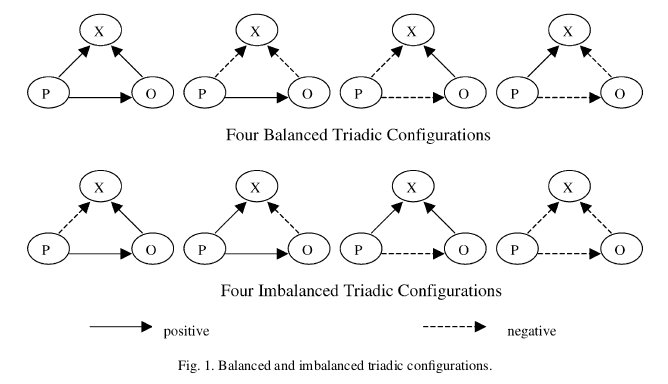In this slidedeck Prof. Aizen explains the basics of attitude formation. A nice introduction to enlarge my vocabulary concerning group behavior. He kicks off with three approaches:
- Information-processing approach: Attitudes based on information about the attitude object. Expectancy-value model / Persuasive communication.
- Behavior-theory approach: Association of attitude object with affect / evaluation.
- Dynamic approach: Attitudes emerge as part of a dynamic interplay of forces.
After an example of classical conditioning of evaluation, genaralization and affect and an example of sublimal conditioning Aizen continues with a Dynamic approach, stating 4 attitude functions (Katz 1960):
- Ego-defensive function: Protect self-esteem. (E.g., A need to confirm one’s own masculinity or femininity may lead to a negative attitude toward homosexuals.)
- Value-expressive function: Express important values. (E.g., A person who places high value on protection of the environment may adopt a positive attitude toward solar power.)
- Knowledge function: Understand people and events. (E.g., A desire to explain why Moslems engage in terrorist activities can produce a negative attitude toward Islam.)
- Instrumental function: Obtain rewards and avoid punishments. (E.g., A desire to obtain promotions, salary increases, and other benefits may lead an employee to adopt the political and social attitudes prevalent in an organization.)
Aizen continues outlining a number of attitude ralated theories:
- Psychological reactance theory (Brehm 1966): “thou shall not eat a cookie…”
- Rationalization (Allport, 1954): “the dutch are cheap, always splitting up their restaurant bills”
- Downward comparision theory (Wills, 1981): “I’ve lost a lot of money, luckily I’m not homeless like him”
- Post hypnotic suggestion (Rosenberg, 1956): “When I click my fingers, you wake up and you don’t care anymore”
Aizen descibes Heider’s balance theory (1958):
my friend’s friend is my friend
my friend’s enemy is my enemy
my enemy’s friend is my enemy
my enemy’s enemy is my friend
More about this theory here. And the source of this image of Heiders POX diagram:
What surprises me is the assumption of ‘you are either with me or against me’. There are no weak ties taken into account, let alone a neutral position.
Let’s continue with Aizens slides.
- Resolution of incongruity; ‘law of inverse polarization’: “I hate this now as much as I loved it before”
- Logical consistancy model (McGuire, 1960): “Smoking is bad. I a bar you are forced to smoke. Smoking in bars must be made illegal”
- Cognitive dissonance (CD) (Festinger 1956): “In 2012 we’re all gonna die. …oh, I can explain…”
- Conditions for disconfirmation strengthen belief
- Tactics reducing CD: denying dissonant elements, reducing the importance (weight) of dissonant elements, increasing the importance (weight) of consonant elements, adding new consonant elements
- Factors enhancing dissonance due to counter-attitudinal behavior: responsibility for the unpleasant consequences of the behavior, concern over looking bad in front of others, threat to self esteem, [?] Bem’s self perception argument
- Post decision dissonance (Brehm, 1956)
- The Monty Hall problem
Aizen concludes with advise when persuading others:
- Get people to publicly advocate a position with which they disagree.
- Get people to commit themselves to a course of action that implies the attitude you are interested in.
- Confront people with their hypocrisy, i.e., show them that they don’t act in accordance with their own attitudes or values.
These three pieces of advise call for action, … supported by visualization!